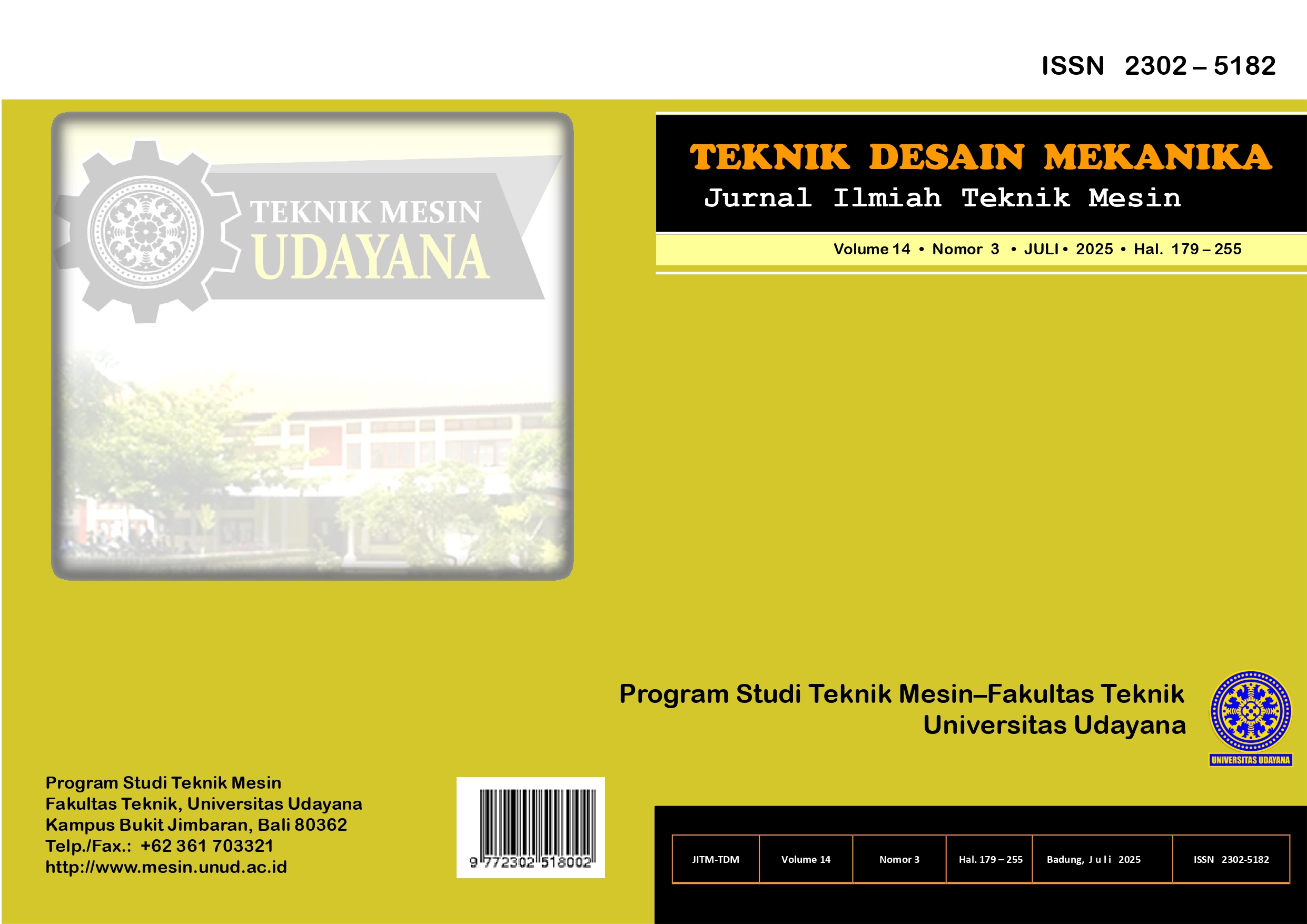The Effect of Volume Fraction on the Thermal Stability of Green Composites Made from Pineapple Leaf Fibers and Potato Starch Matrix
Abstract
Global warming and climate change have spurred an urgent need for the development of environmentally friendly materials
with good thermal stability. Green composites, made from natural fiber-based materials, offer a sustainable solution with lower
environmental impact. This study focuses on green composites using pineapple leaf fibers as reinforcement and potato starch
as the matrix to bind the fibers. The objective is to evaluate the effect of varying fiber volume fractions (5%, 7.5%, and 10%)
of pineapple leaf fibers on the thermal stability of composites with a potato starch matrix. Pineapple leaf fibers, an agricultural
by-product with high lignocellulosic content, exhibit potential as a strong and lightweight reinforcing material, while potato
starch serves as a matrix that provides mechanical strength. The study employs thermogravimetric analysis (TGA) and
microscopic analysis to assess the thermal stability of the green composites at different fiber volume fractions. The results will
be compared with similar research using bamboo fibers to understand the differences in thermal stability between pineapple
leaf fibers and bamboo fibers. This study are expected to provide new insights into the efficiency and potential of pineapple
leaf fiber-based green composites as an environmentally friendly alternative for various industrial applications. The results
also contribute to global efforts to reduce the use of petroleum-based materials by offering a more sustainable and eco-friendly
solution in composite material development.


